Happy International Women’s Day! Looking for some inspiration? The theme this year is #BEBOLDFORCHANGE. We’ve gathered a list of incredible women from around the world that are doing incredible things in STEAM. We are in awe and we hope you feel the same. The International Women’s Day website has a ton of ways for you to take action. How will you be bold?
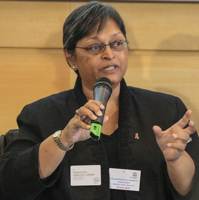 Quarraisha Abdool Karim, South Africa, Epidemiologist
Quarraisha Abdool Karim, South Africa, Epidemiologist
Quarraisha Abdool Karim is an epidemiologist born and raised in South Africa. In 2016, she was awarded the L’Oréal-UNESCO Awards for Women in Science for her “remarkable contribution to the prevention and treatment of HIV and associated infections, greatly improving the quality of life of women in Africa”. After presenting her groundbreaking work providing a proof of concept that an antiretroviral gel used before and after sex can protect women against HIV, she received a standing ovation, which is very uncommon at a scientific meeting. And as if this wasn’t wonderful enough, this gel had the unexpected and very welcome benefit of 51% effectiveness in preventing genital herpes infections. In 2015, Dr. Karim was named the first female winner of the 2015 TWAS-Lenovo Science Prize, receiving $100,000 for her extraordinary and life-saving work.
 Nicola Allen, United Kingdom, Molecular Neurobiologist
Nicola Allen, United Kingdom, Molecular Neurobiologist
Nicola Allen is Assistant Professor and Hearst Foundation Development Chair at the Salk Institute. Born and raised in the UK, Professor Allen researches how cells in the brain communicate in order to better understand how to treat neurodevelopmental disorders such as autism. Growing up in England, she was exposed to great biology classes and teachers who inspired her desire to work in science. She became fascinated by the brain, the most mysterious of all organs, so she began to learn more. Dr. Allen was the first in her immediate family to receive a PhD.
Maha Almuneef, Saudi Arabia, Physician
Maha Almuneef is a board-certified physician on a mission to end violence against women and children. A 55 year old mother of three children, Dr. Almuneef has stood against societal norms by not only earning a medical degree, but also by creating and running her own organization, the National Family Safety Program, which focuses on prevention programs, training professionals, providing counselling and referral services and manages the Saudi Child Helpline which delivers counselling for children who’ve been subjected to abuse. She is a role model and a beacon of hope.
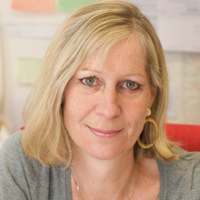 Anne Dejean-Assémat, France, Molecular Biologist
Anne Dejean-Assémat, France, Molecular Biologist
Anne Dejean-Assémat was exposed to science at an early age, having two parents who were both in STEM. After having graduated with a Master of Science and PhD in Genetics at the Pierre et Marie Curie University, she focused her work on the development of human cancers. She and her collaborators have made critical advances in understanding the origin of certain cancers and have opened up unique perspectives for new targeted therapeutic leads. Dr. Dejean-Assémat is Professor at the Institut Pasteur and was elected member of the French Academy of Science in 2004.
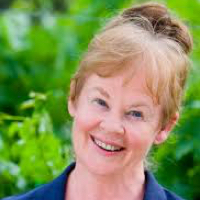 Jennifer Graves, Australia, Geneticist
Jennifer Graves, Australia, Geneticist
Born and raised in Australia, Professor Graves is… wait for it… Distinguished Professor, Professor Emeritus, ANU; Thinker-in-Residence, University of Canberra; Professorial Fellow, University of Melbourne, College of Science, Health and Engineering, School of Life Sciences, Department of Ecology, Environment and Evolution at LaTrobe University. Whew! How did this happen? Well here’s the short version. She has made critical contributions to the understanding of mammalian genome organization and evolution, exploiting the incredible genetic diversity of Australia’s unique animals as a source of genetic variation to study highly conserved genetic structures and processes. She is (in)famous for her prediction that the human Y chromosome is disappearing. Professor Graves has published more than 420 scientific works, including 4 books, was elected a Fellow of the Australian Academy of Science in 1999 and served on the Academy Executive, first as Foreign Secretary, then as Secretary for Education. Whew indeed!
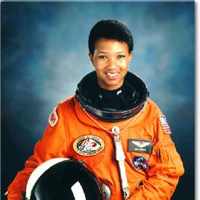 Mae C. Jemison, United States, Astronaut
Mae C. Jemison, United States, Astronaut
In 1992, Mae Jemison became the first African-American woman to ever go to space with the Endeavour mission after applying to NASA for its training program in 1987. Before that, she earned a degree in chemical engineering from Stanford University and a medical degree from Cornell University. Because all of that clearly wasn’t enough, she joined the Peace Corps to research and practice medicine in Liberia and Sierra Leone. She is the stuff of legend.
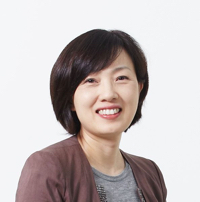 V. Narry Kim, South Korea, Biochemist and Microbiologist
V. Narry Kim, South Korea, Biochemist and Microbiologist
South Korean biochemist and microbiologist Dr. V. Narry Kim first became interested in science as a high school student. When asked why she chose science as a lifelong career, she said, “I was charmed by the simplicity of the principles underlying the complexity of life.” Kim earned her bachelor’s and master’s degrees in science from Seoul National University (SNU), considered one of the best universities in Asia. She then moved to the UK to receive a PhD in Philosophy at the University of Oxford and then onto the US, where she became a research assistant at the University of Pennsylvania. Dr. Kim returned to South Korea, working at SNU as a research assistant professor and by then had 22 of her papers published in well-respected scientific journals… at the age of 35. She’s currently a professor at SNU, Director at the Center for RNA Research, Institute for Basic Science and an SNU Distinguished Fellow. Holding four patents based on her research activities, we’re pretty sure Dr. Kim doesn’t sleep.
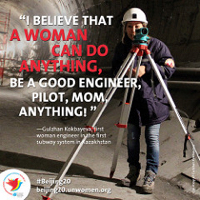 Gulzhan Kokbayeva, Kazakhstan, Engineer
Gulzhan Kokbayeva, Kazakhstan, Engineer
Gulzhan Kokbayeva, age 29, is the only female engineer for the first subway system in Kazakhstan, a country known for housing the first space launch complex in the world, the Baikonur Cosmodrome. Kazakhstan passed the Law on State Guarantees of Equal Rights and Equal Opportunities for Men and Women in 2009, but in reality it isn’t the norm to see women working as engineers, particularly in dangerous situations. After graduating from Kazakhstan National Technical University in 2008, she passed several stages of the selection process to become the first and only female engineer.
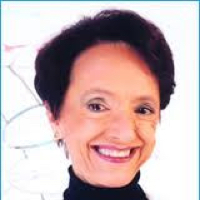 Ana María López Colomé, Mexico, Biochemist
Ana María López Colomé, Mexico, Biochemist
When Ana Maria Lopez Colomé was starting her career as a biologist 30 years ago, science was a male domain in her native country, Mexico. She’s now a biology professor in Mexico’s National University and a pioneer in her field of study. Her important work on finding cures for blindness earned her the prestigious UNESCO L’Oreal prize for Women in Science in 2002.
 May-Britt Moser, Norway, Neuroscientist
May-Britt Moser, Norway, Neuroscientist
Dr. Moser is a Norwegian neuroscientist, psychologist and the head of the department of the Centre Neural Computation at the Norwegian University of Science and Technology (NTNU). Moser’s work gave the ability for scientists to gain new knowledge into the cognitive processes and spatial deficits associated with human neurological conditions such as Alzheimer’s disease. She and her then-husband, Edvard Moser, pioneered research on the brain’s mechanism for representing space together with their mentor John O’Keefe. They shared the 2014 Nobel Prize in Physiology or Medicine with O’Keefe, awarded for work concerning the grid cells in the entorhinal cortex, as well as several additional space-representing cell types in the same circuit that make up the positioning system in the brain. We literally feel smarter just having written this.
 Josephine Namboze, Uganda, Physician
Josephine Namboze, Uganda, Physician
Known as the first woman professor of medicine in East Africa, Josephine Namboze is a Ugandan physician, public health specialist and professor emeritus at Makerere University School of Public Health. After being the first and only woman in her medical program at Makerere University School of Medicine, she went on to focus on maternal and child health, one of the biggest problems in the East and Central African region. She later became the Director of Support for Health Services Development at the World Health Organization’s regional office in the Republic of Congo, where she managed health initiatives for 46 countries in the region. Dr. Namboze is currently a board member of a number of NGOs and hospitals and chairperson of the National Certification Committee for the Polio Eradication Initiative in Uganda. She vocally pointed out that race was not a determinant of disease at a time when that was common thought. Oh yeah, and she’s a mother of four. Wow.
 Asel Sartbaeva, Kyrgyzstan, Research Scientist
Asel Sartbaeva, Kyrgyzstan, Research Scientist
At the young age of 38, Asel Sartbaeva is one of the first internationally recognized female scientists from Central Asia. Currently a research fellow at the University of Bath, studying ways for vaccines to be transported without the expensive and challenging aspects of keeping them at lower temperatures. Her groundbreaking research, if successful, could potentially save millions of lives around the world, and drop the prices of vaccinations to make them more widely available in developing countries. NBD. She was inspired by her high school teachers and worked hard to find scholarships in her field. Dr. Sartbaeva is choosing to live in the UK instead of her home country because she can make a greater difference for for a larger group of people by being able to focus on research.
 Thaisa Storchi-Bergmann, Brazil, Astrophysicist
Thaisa Storchi-Bergmann, Brazil, Astrophysicist
Thaisa Storchi-Bergmann is a Brazilian astrophysicist and professor of Physics and Astronomy at Federal University of Rio Grande do Sul, one of the largest federal universities in Brazil. Having studied super-massive black holes in the centers of galaxies and their associated regions of dense gas, dust, and young stars surrounding them, as well as their role in the evolution of galaxies, she became one of the most cited Brazilian scientists in 2004 and in 2009 she joined the Brazilian Academy of Sciences. She believes in the critical role of education, saying “from malnutrition to poverty to disrespect for the environment to extremist beliefs that lead to violence – education could go a long way in solving these problems. Teaching should be considered the most important job in our societies.”
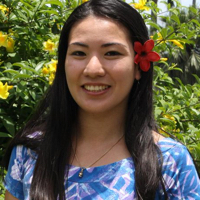 Dr. Erna Takazawa, Samoa, Opthamologist
Dr. Erna Takazawa, Samoa, Opthamologist
Erna Fumi Rebecca Fotuofaamanuiaga Takazawa was born in Japan and raised in Samoa. She graduated with First Class Honors with a degree in Optometry and is the first fully qualified optometrist on the island. Why is this important? Samoans no longer have to pay exorbitant costs for glasses or wait months because the closest place to get them was Australia/New Zealand. Dr. Takazawa always knew she wanted to be a doctor but it was her sister’s vision problems that inspired her to focus on optometry, knowing first hand the difficulties of those with vision problems on the island. Oh yeah, and she’s 26. Millennials in ACTION!
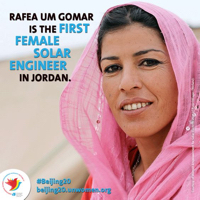 Rafea Um Gomar, Jordan, Solar Engineer
Rafea Um Gomar, Jordan, Solar Engineer
Rafea Um Gomar is the first female solar engineer in Jordan and is responsible for not only helping to create 80 solar installations in Jordan but is also training other women to do the same. As if this isn’t enough, she is the first female member of her municipal council in Manshiat Al-Ghayath, an isolated area about 260 kilometers from the capital city of Ammam. Living in a conservative village with a conservative family, she went against their wishes and attended Barefoot College in India, where rural women, often with little or no education, from around the world receive training to become solar engineers. She came back inspired and wanting to make a difference. Goal achieved.
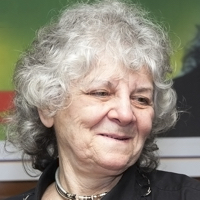 Ada E. Yonath, Israel, Crystallographer
Ada E. Yonath, Israel, Crystallographer
Ada E. Yonath is an Israeli crystallographer (crystallography is the experimental science of determining the arrangement of atoms in the crystalline solids) best known for her pioneering work on the structure of the ribosome. While she said that there’s nothing special about a woman winning the Nobel Prize in the sciences, we humbly disagree. In 2009, she was the first woman in 45 years to win the Prize in Chemistry and we think that’s important. Inspired by Marie Curie, Yonath accepted postdoctoral positions at Carnegie Mellon University and MIT after having graduated with a PhD in Chemistry. While a postdoc at MIT she spent some time in the lab of subsequent 1976 chemistry Nobel Prize winner William N. Lipscomb, Jr. of Harvard University. She’s currently the Director of the Helen and Milton A. Kimmelman Center for Biomolecular Structure and Assembly of the Weizmann Institute of Science. We honestly didn’t have room for all the awards she’s been given so here’s a list!
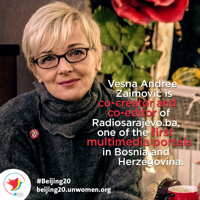 Vesna Andree Zaimović, Sarajevo, Co-Creator and Co-Editor of Radio Sarajevo
Vesna Andree Zaimović, Sarajevo, Co-Creator and Co-Editor of Radio Sarajevo
Vesna Andree Zaimović started her career as a musician, having graduated with a degree in Musicology in 2003. Sarajevo’s tumultuous history proved a critical period for her career journey. While teaching guitar lessons, she was always curious about the role of new media in helping people stay informed. She co-created the website Radio Sarajevo, one of the first online communities in the country. It was also the first to create a media space for ethnic minorities, people with disabilities, those living in poverty and the LGBT community, and to tackle issues of discrimination in the Bosnian and Herzegovinian media. She works with her team to train others in media literacy and continues to promote human rights.
Photo Credits:
Quarraisha Abdool Karim, South Africa, Epidemiologist
https://www.flickr.com/photos/127450990@N05/26111469285/
Nicola Allen, United Kingdom, Molecular Neurobiologist
https://www.salk.edu/scientist/nicola-allen/
Maha Almuneef, Saudi Arabia, Physician
https://commons.wikimedia.org/wiki/File:Maha_Al_Muneef_with_Obama.jpg#/media/File:Maha_Al_Muneef_with_Obama.jpg
Anne Dejean-Assémat, France, Molecular Biologist
By Frezd – Own work, CC BY-SA 4.0, https://commons.wikimedia.org/w/index.php?curid=46698729
Jennifer Graves, Australia, Geneticist
https://researchers.anu.edu.au/researchers/graves-jam
Mae C. Jemison, United States, Astronaut
https://www.jsc.nasa.gov/Bios/htmlbios/jemison-mc.html
Narry Kim, South Korea, Biochemist and Microbiologist
https://commons.wikimedia.org/wiki/File:Narry_Kim.jpg
Gulzhan Kokbayeva, Kazakhstan, Engineer
https://www.flickr.com/photos/unwomen/15516451729
Ana María López Colomé, Mexico, Biochemist
https://www.heroinas.net/2012/11/ana-maria-lopez-colome.html
May-Britt Moser, Norway, Neuroscientist
https://media1.britannica.com/eb-media/76/180676-004-21A96D04.jpg
Josephine Namboze, Uganda, Physician
https://www.flickr.com/photos/unwomen/20852350335
Asel Sartbaeva, Kyrgyzstan, Research Scientist
https://www.rsc.org/diversity/175-faces/all-faces/dr-asel-sartbaeva-mrsc
Thaisa Storchi-Bergmann, Brazil, Astrophysicist
https://alchetron.com/Thaisa-Storchi-Bergmann-172578-W
Dr. Erna Takazawa, Samoa, Opthamologist
https://twitter.com/unwomenpacific/status/586057300877639680
Rafea Um Gomar, Jordan, Solar Engineer
https://www.pinterest.com/pin/185843922098445603/
Ada E. Yonath, Israel, Crystallographer
https://commons.wikimedia.org/wiki/File:Ada_E._Yonath.jpg
Vesna Andree Zaimović, Sarajevo, Co-Creator and Co-Editor of Radio Sarajevo
https://www.flickr.com/photos/unwomen/20852346165




